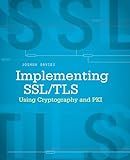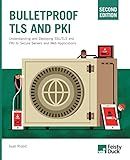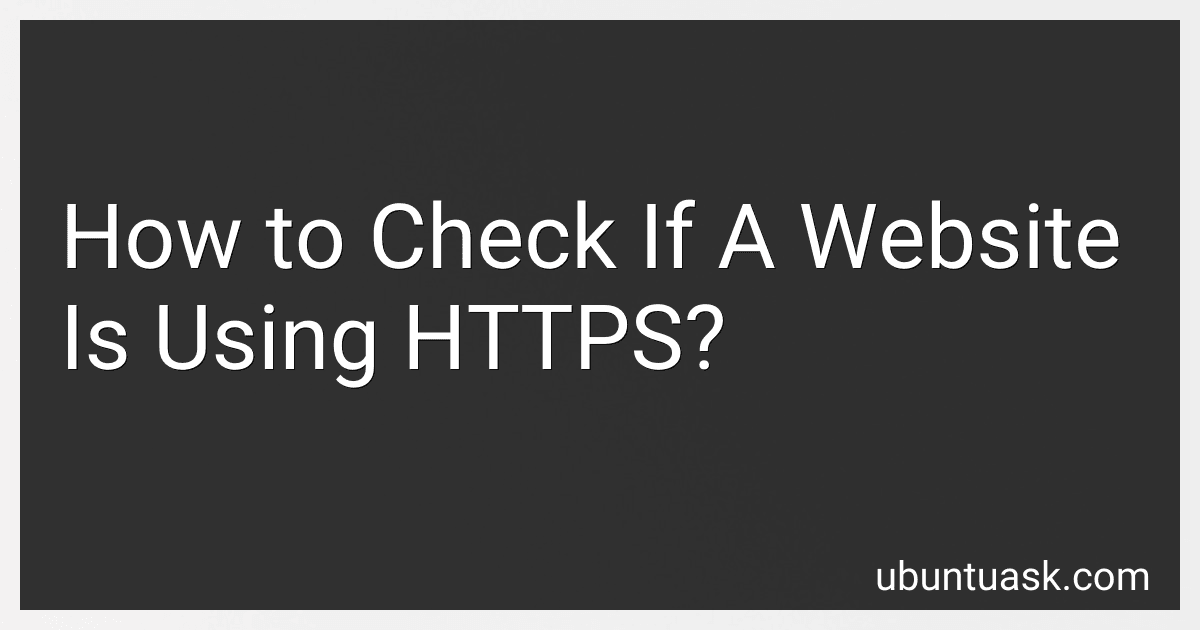Best Security Certificates to Buy in December 2025

SSL/TLS Under Lock and Key: A Guide to Understanding SSL/TLS Cryptography



Implementing SSL / TLS Using Cryptography and PKI



Bulletproof TLS and PKI, Second Edition: Understanding and Deploying SSL/TLS and PKI to Secure Servers and Web Applications



FREE SSL CERTIFICATES: Secure your Web server with free Let's Encrypt Certificates Guide to fully automate the process of creating and renewing certificates. (CTS SOLUTIONS IT-PRO E-Books Book 4)



SSL server certificate creation manual for CentOS 8/7 (Japanese Edition)



My own Certificate Authority: Create your own graphical CA for Intranets with Open Source Software for Windows, Linux and MAC (CTS SOLUTIONS IT-PRO E-Books Book 1)



Mastering NGINX Second Edition



IIS Essentials: From Installation to Maintenance - The Ultimate Guide: Unleashing the Power of Your Web Server



$15M Line Item That Doesn't Exist: The Invisible Certificate Management Tax and How Automation Eliminates 95% of It (Your Infrastructure Intelligence Book 3)


To check if a website is using HTTPS, you can follow these steps:
- Look at the website URL: Check the URL of the website in the address bar of your browser. If the website is using HTTPS, the URL will start with "https://" instead of "http://". The 's' in HTTPS stands for secure.
- Look for the padlock icon: Most modern browsers display a padlock icon in the address bar to indicate that the website is using a secure connection. The padlock may appear either in green or gray color, depending on the browser you are using.
- Verify the certificate: Click on the padlock icon or the HTTPS indicator in the address bar. This will display information about the website's security certificate. Verify if the certificate is valid and issued by a trusted authority. You can also view details about the certificate, such as its expiration date.
- Check for warning messages: Sometimes, if there are issues with the website's security certificate or if it doesn't meet certain criteria, your browser may display a warning message. Take note of any such warnings and proceed with caution.
- Use browser extensions: There are several browser extensions available that can help you determine if a website is using HTTPS. These extensions often display a padlock icon or a color-coded badge indicating whether a website is secure or not.
It is crucial to ensure that a website is using HTTPS, especially when entering sensitive information such as passwords, credit card details, or personal data. Using a secure connection helps protect your data and ensures that it is encrypted during transmission, making it harder for unauthorized individuals to intercept or access it.
How to check if a website is using an outdated SSL certificate?
To check if a website is using an outdated SSL certificate, follow these steps:
- Open the website in a web browser.
- Click on the padlock icon or the SSL certificate information present in the address bar. This icon usually appears on the left side of the URL.
- A drop-down menu will appear, displaying details about the SSL certificate and its validity.
- Look for the "Valid from" and "Valid until" dates. These dates indicate the period for which the SSL certificate is valid.
- Compare the "Valid until" date with the current date. If the "Valid until" date has already passed or is close to expiration, the SSL certificate can be considered outdated.
- Additionally, check if the certificate issuer is a trusted Certificate Authority (CA). Outdated certificates often have a CA that is no longer considered secure or trusted.
Note: It's important to keep in mind that an outdated SSL certificate does not necessarily mean that the website is compromised or insecure. However, it may indicate that the website needs to update its certificate to maintain the highest level of security and trust.
How do I know if my website is using HTTPS by default?
There are several ways to check if your website is using HTTPS by default:
- Visual Indicator: When you visit your website in a web browser, check if there is a padlock symbol in the address bar. This indicates that your website is using HTTPS.
- URL: Look at the website URL and check if it starts with "https://" instead of just "http://". The presence of "https://" indicates that your website is using HTTPS.
- Server Response: Use a web developer tool or browser extension to view the network requests made by your website. Look for the initial request (usually the homepage) and check if the scheme is "https://" instead of "http://". This indicates that your website is using HTTPS by default.
- SSL/TLS Certificate: Check your website's SSL/TLS certificate. You can do this by visiting your website and inspecting the certificate details in your browser settings. If the certificate is valid and issued specifically for your domain, it confirms that your website is using HTTPS.
- Online Tools: There are various online tools available that can analyze your website and provide detailed information about its SSL/TLS configuration. These tools can help you verify if your website is using HTTPS by default.
It's important to ensure that your website is using HTTPS by default to provide a secure browsing experience for your visitors and to protect sensitive information exchanged between the website and its users.
Can I trust a website that shows an SSL error warning?
Seeing an SSL error warning on a website usually indicates that there may be an issue with the website's SSL certificate, encryption, or security configuration. While it doesn't necessarily mean that the website is malicious, it does indicate potential security risks. Therefore, it is wise to exercise caution when encountering an SSL error warning.
Here are a few considerations before deciding to trust a website that displays an SSL error warning:
- Verify the SSL error: Sometimes, a website might display an SSL warning due to misconfiguration or an expired certificate. In such cases, the error might be temporary, but it is still advisable to proceed with caution.
- Assess the website's importance: If it is a well-known and reputable website, such as a major e-commerce platform or a trusted banking site, it is safer to avoid proceeding when encountering an SSL error warning.
- Evaluate the context: If you are visiting a website that should have sensitive personal or financial information, it is best to avoid proceeding when facing an SSL error. However, for informational websites without any critical interaction or data exchange, the risk might be lower.
- Check for other security indicators: Look for other trust indicators on the website, such as trust seals, privacy policies, and contact details. A legitimate website will usually provide these elements to establish credibility.
Ultimately, it is crucial to exercise caution when encountering an SSL error warning and consider the context, importance, and trustworthiness of the website before making a decision.
